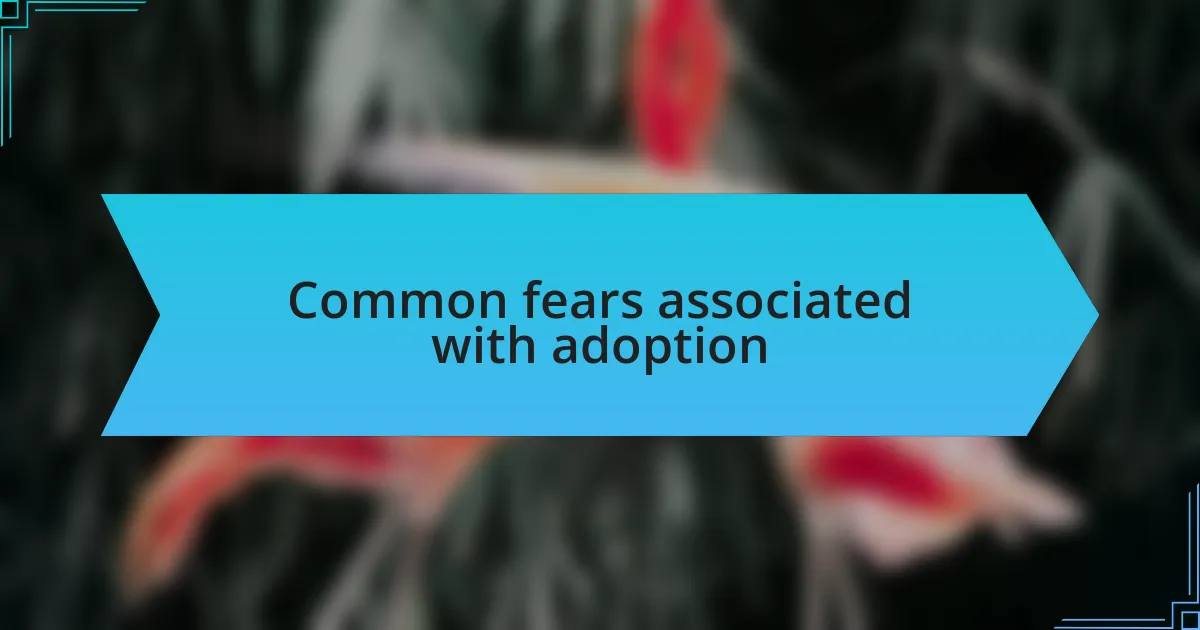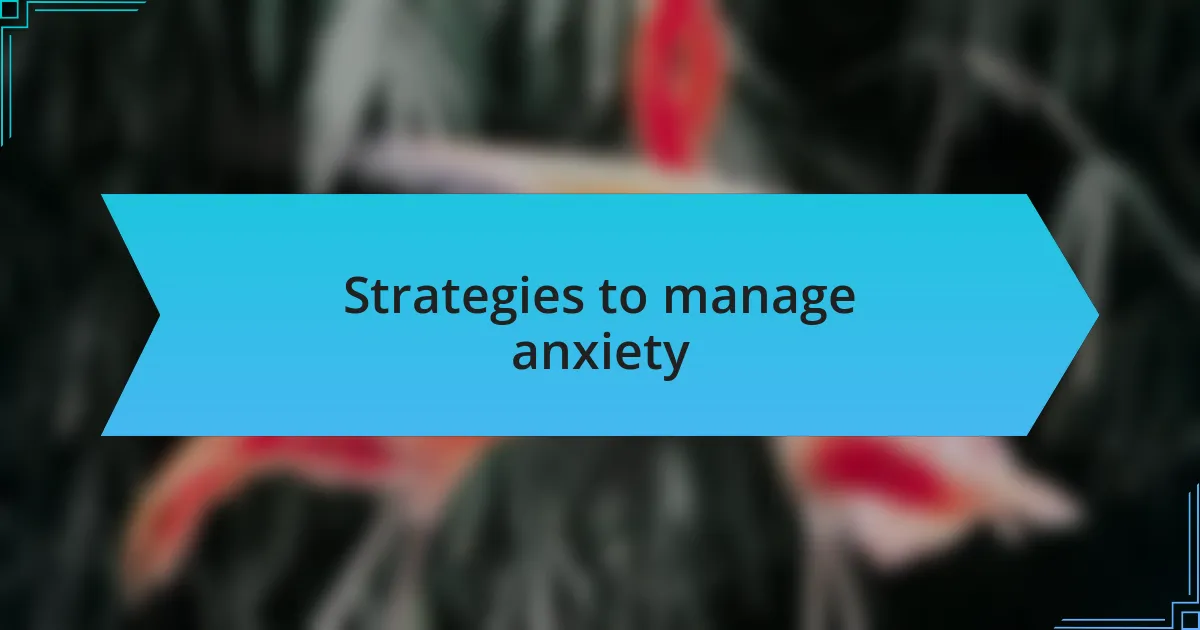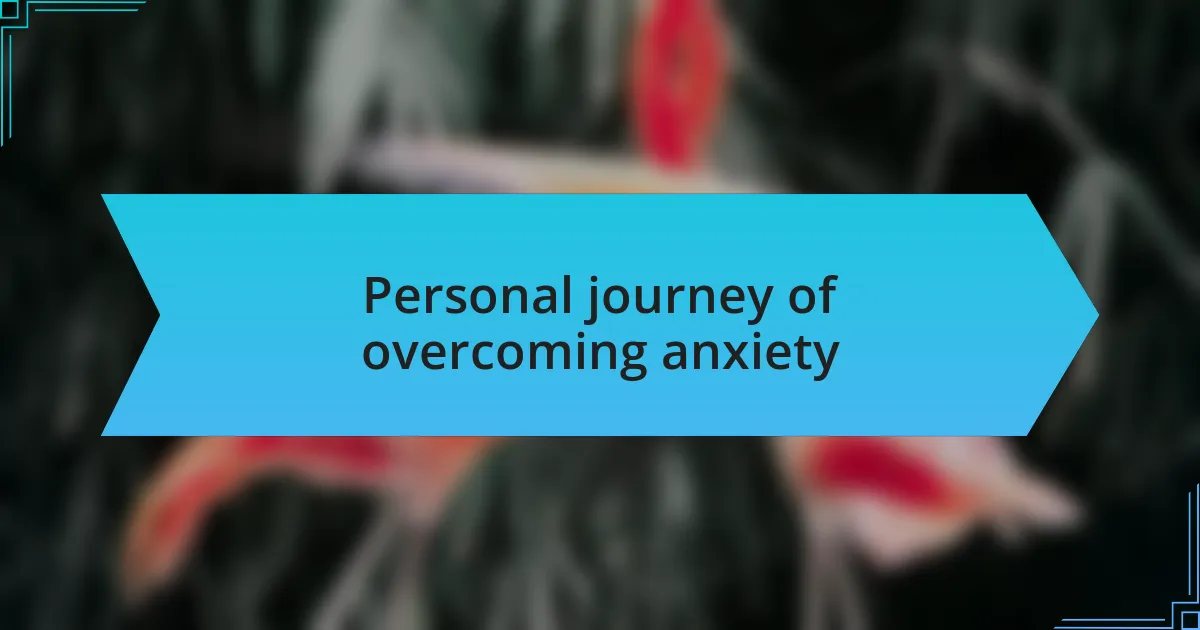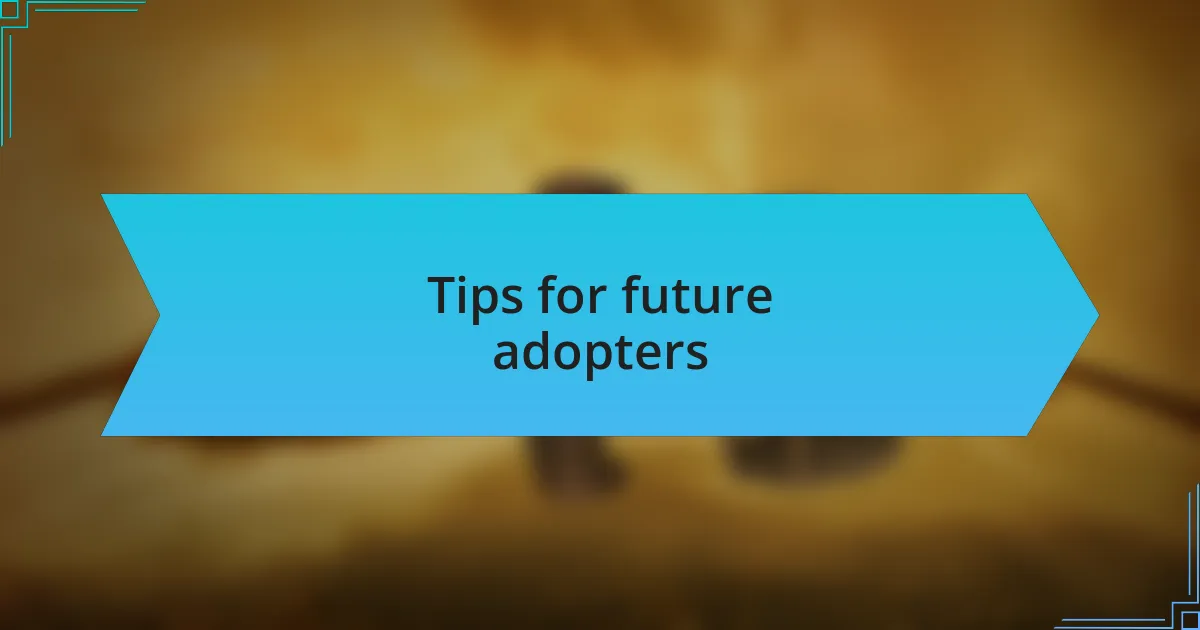Key takeaways:
- Understanding adoption anxiety involves recognizing fears about readiness, commitment, and financial responsibilities when considering a new pet.
- Adopting a pet not only saves a life but also creates a meaningful bond that enriches both the animal and the owner’s lives.
- Preparation steps include creating a safe environment, researching the pet’s needs, and seeking support from adoption communities.
- Managing anxiety can be achieved through mindfulness, setting realistic expectations, and sharing experiences with others to build confidence.

Understanding adoption anxiety
Adoption anxiety can feel overwhelming, especially when considering bringing a new pet into your home. I remember staring at the adoption application, my stomach in knots, wondering if I would be ready to care for another living being. Can I truly offer the love and stability that a shelter animal desperately needs?
It’s common to second-guess your ability to provide for a new pet, both emotionally and financially. I found myself questioning whether I was prepared for the long-term commitment. There were sleepless nights, where I pondered if adopting would be a decision that filled my life with joy or opened the door to challenges I wasn’t ready to face.
Sometimes, the fear stems from loss – the idea of losing a pet again hits hard. I recall my first dog and the heartbreak of saying goodbye; it was a loss that left a mark. Does that mean I should let fear dictate my choices? Ultimately, reflecting on my capacity to love and provide care for another animal helped shift my perspective. Understanding this fear is essential to overcoming it.

Importance of animal adoption
Adopting an animal is not just about giving a pet a home; it’s about creating a bond that can transform both your lives. When I decided to adopt my cat, I realized it wasn’t only about rescue, but also about finding a companion who needed me as much as I needed them. Have you ever felt that instant connection with an animal? It’s truly magical.
Every time an animal finds a loving home, it also means making space for another in need. I remember visiting the shelter and seeing countless faces, each with a story to tell, each deserving a chance. It struck me how my decision could ripple out, helping not only that one animal but also making room for others to be saved. Who wouldn’t want to be part of that cycle of hope?
Furthermore, adopting an animal often means saving a life. I have seen firsthand the joy that comes from giving a second chance to a pet that may have faced uncertain futures. Isn’t it inspiring to think that by opening our hearts and homes, we can create a better world for these innocents? The impact of adoption extends far beyond just the act itself; it fosters a deeper sense of community and compassion that can touch everyone involved.

Common fears associated with adoption
When considering adoption, many potential pet owners grapple with a fear of the unknown. I remember the butterflies in my stomach as I thought about welcoming a new furry friend into my home. What if our personalities clashed? It’s a valid concern, as compatibility is crucial for a harmonious relationship. Have you ever wondered if you can meet the unique needs of a pet, especially one with a troubled background?
Another common fear revolves around the commitment involved in pet ownership. Adopting means making a promise to care for another living being, and that can feel daunting. I once hesitated, questioning whether I had enough time to dedicate to a new companion. The thought of balancing work, life, and a pet’s needs made me pause. Have you felt that pressure to be perfect? The truth is, understanding that it’s okay to seek support and resources can alleviate that anxiety.
Potential adopters also worry about the financial aspects of caring for a pet. When I adopted my dog, I had to remind myself that expenses like food, veterinary care, and supplies are essential. I often reflected on whether I could manage these costs alongside my usual budget. Have you thought about how adopting an animal can sometimes feel like an overwhelming financial commitment? It’s essential to weigh these factors, but with proper planning, you can overcome this hurdle and provide a loving home.

Steps to prepare for adoption
Preparing for adoption is a crucial step in addressing those anxieties. First, create a comfortable and safe environment for your future pet. I vividly recall my first night with my cat; I spent hours arranging her space, ensuring she had cozy spots to retreat to. Have you thought about how a well-prepared home can ease the transition for a pet in need of love?
Next, research your prospective furry friend’s breed and personality traits. I remember pouring over articles and books to understand the specific needs of my dog, and it made a world of difference. Knowing what to expect can help you feel more confident in your decision. What questions do you have about the characteristics that might influence your new pet’s behavior?
Finally, reach out to local shelters or support groups for advice. I’ve found that talking to others who have adopted can provide invaluable insights. When I shared my worries with fellow pet owners, their encouragement helped me realize that I wasn’t alone. Have you considered how engaging with an adoption community can empower you in your journey?

Strategies to manage anxiety
When anxiety creeps in, incorporating mindfulness techniques can make a significant difference. I often find that taking a few moments to breathe deeply helps to refocus my thoughts and calm my nerves. Have you ever tried simply sitting quietly, inhaling slowly, and letting each exhale release some tension? It’s a small practice that can drastically improve your mindset.
Setting realistic expectations is another crucial strategy. When I adopted my dog, I initially envisioned a perfect bond right away. However, it took time for both of us to adjust to our new lives together. Understanding that patience is key can transform how you experience those anxious moments. Have you considered how allowing yourself the grace to adapt can alleviate some of that pressure?
Additionally, keeping a journal to express your feelings can be incredibly therapeutic. I remember jotting down my worries about my cat’s integration into our family and, surprisingly, found clarity in my thoughts as I wrote. How might putting pen to paper reveal your inner concerns and help you feel more grounded? It’s a simple act that can uncover insights about your journey and lead you to a calmer mindset.

Personal journey of overcoming anxiety
The first time I experienced anxiety after adopting, it was overwhelming. I remember feeling a knot in my stomach every time my new puppy barked. It made me question my abilities as a pet owner. It took many late-night walks and quiet moments to realize that anxiety doesn’t equate to failure; rather, it’s part of the process. Have you ever felt that knot, only to find that with time, it loosens?
As I began to share my experiences with fellow pet owners, I found solace in their stories. One friend mentioned how her dog seemed anxious at first too, and it struck me—our pets often mirror our feelings. It made me reflect on my own journey and how, by facing my anxiety head-on, I could cultivate a safe space for both of us. How might sharing your fears help you connect with others and ease your own worries?
On particularly tough days, I turned to creativity to navigate my feelings. Once, I spent an afternoon painting a picture of my pets relaxing in the sun. With every brushstroke, I found myself processing my anxiety more effectively. Looking back, I realize how art became a powerful outlet, allowing me to embrace my emotions rather than hide them. Have you considered what creative outlets might help you channel your own journey through anxiety?

Tips for future adopters
When considering adoption, take the time to prepare your home and mindset. I remember spending an entire weekend creating a safe, inviting space for my new dog. It was a labor of love, and in doing so, I found that the more comfortable I felt about the environment, the more my anxiety diminished. What steps can you take to make your home feel welcoming for your future pet?
Building a routine can also work wonders. After I adopted, establishing a daily schedule for walks, feeding, and playtime helped me feel more secure in my new role. It not only provided my pup with consistency but also helped ease my worries because I could anticipate what each day would bring. Have you thought about how creating a daily structure might alleviate some of your fears?
Lastly, don’t hesitate to reach out for support from your local community or online forums. I was hesitant at first, but joining a pet adopter’s group opened up a wealth of resources and friendship. I gained invaluable tips and found comfort in the shared experiences of others. How might connecting with fellow adopters enhance your confidence as a pet owner?